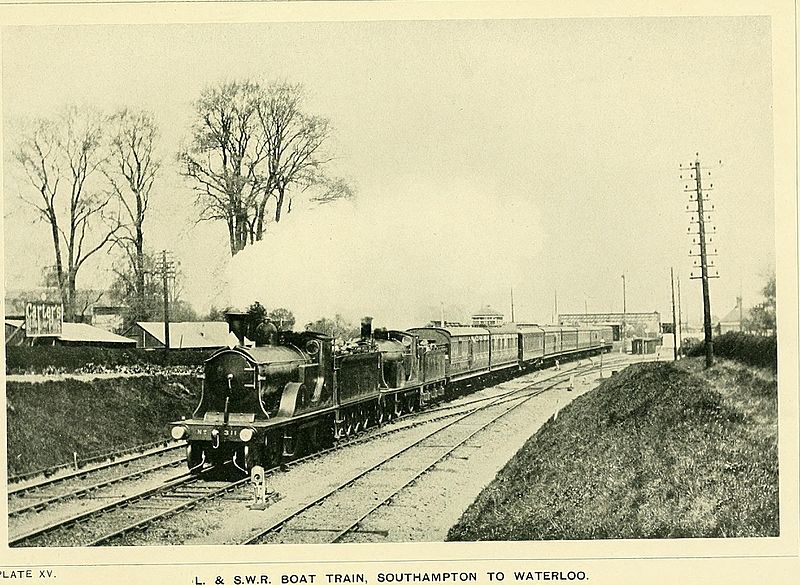Archivo: Every boy's book of railways and steamships (1911) (14778864773)

Descripción: Identifier: everyboysbookofr00prot (find matches) Title: Every boy's book of railways and steamships Year: 1911 (1910s) Authors: Protheroe, Ernest Subjects: Railroads Steamboats Publisher: London : Religious Tract Society Contributing Library: Boston College Libraries Digitizing Sponsor: Boston Library Consortium Member Libraries View Book Page: Book Viewer About This Book: Catalog Entry View All Images: All Images From Book Click here to view book online to see this illustration in context in a browseable online version of this book. Text Appearing Before Image: the struggles with France, it had beenproposed to cut a ship canal from the capital toavoid the danger to which, in war time, shippingwas exposed in passing up the Strait of Dover tothe mouth of the Thames. The success of the railway in the North ofEngland set thoughts in an entirely new direction.A line through the region between London andSouthampton was what is often called a tallorder, for Southampton had only a population of19,000, and the next biggest town along the routewas Winchester with 8000. This led the humoriststo dub the new undertaking the parsons andprawns line, for they said the former fromWinchester and the latter from Southampton wouldconstitute the main freights; and, indeed, the firstlocomotive stock was to consist of only fivelocomotives, two for passengers and three forgoods. The new line was opposed vigorously, especiallyby people interested in the south coast coachingbusiness. One man owned three score coaches andfifteen hundred horses. He was a wise man ; he Text Appearing After Image: A GARLAND OF IRON RIBBONS 125 sold up his business and invested the money in therailway ; and in later years he became Chairman ofthe Directors. The line was opened in 1840, for the constructionhad entailed no special difficulties, except wheregreat embankments were required, while steepgradients were necessary to carry the line over theridge of country running from east to west throughHampshire. In the year 1844 came the Magna Charta ofthe third-class passengers. Parliament insisted thaton every railway there should be at least one traineach way per day at a penny a mile, and that eventhe humbler passengers were to be protected fromthe weather. The L. & S.W.R. complied with rathera bad grace. The coaches were roofed, but lightedonly by skylights ; the ventilation slits were placedhigh up and were covered with a curtain, so thatthose who travelled at the Parliamentary rate shouldnot enjoy the beauty of the scenery into thebargain. Naturally the London and South-Western andthe Grea Note About Images Please note that these images are extracted from scanned page images that may have been digitally enhanced for readability - coloration and appearance of these illustrations may not perfectly resemble the original work.
Título: Every boy's book of railways and steamships (1911) (14778864773)
Créditos: https://www.flickr.com/photos/internetarchivebookimages/14778864773/ Source book page: https://archive.org/stream/everyboysbookofr00prot/everyboysbookofr00prot#page/n160/mode/1up
Autor(a): Internet Archive Book Images
Permiso: At the time of upload, the image license was automatically confirmed using the Flickr API. For more information see Flickr API detail.
Términos de Uso: No known copyright restrictions
Licencia: No restrictions
Enlace de Licencia: https://www.flickr.com/commons/usage/
¿Se exige la atribución?: No
Usos del archivo
La siguiente página enlaza a este archivo:

